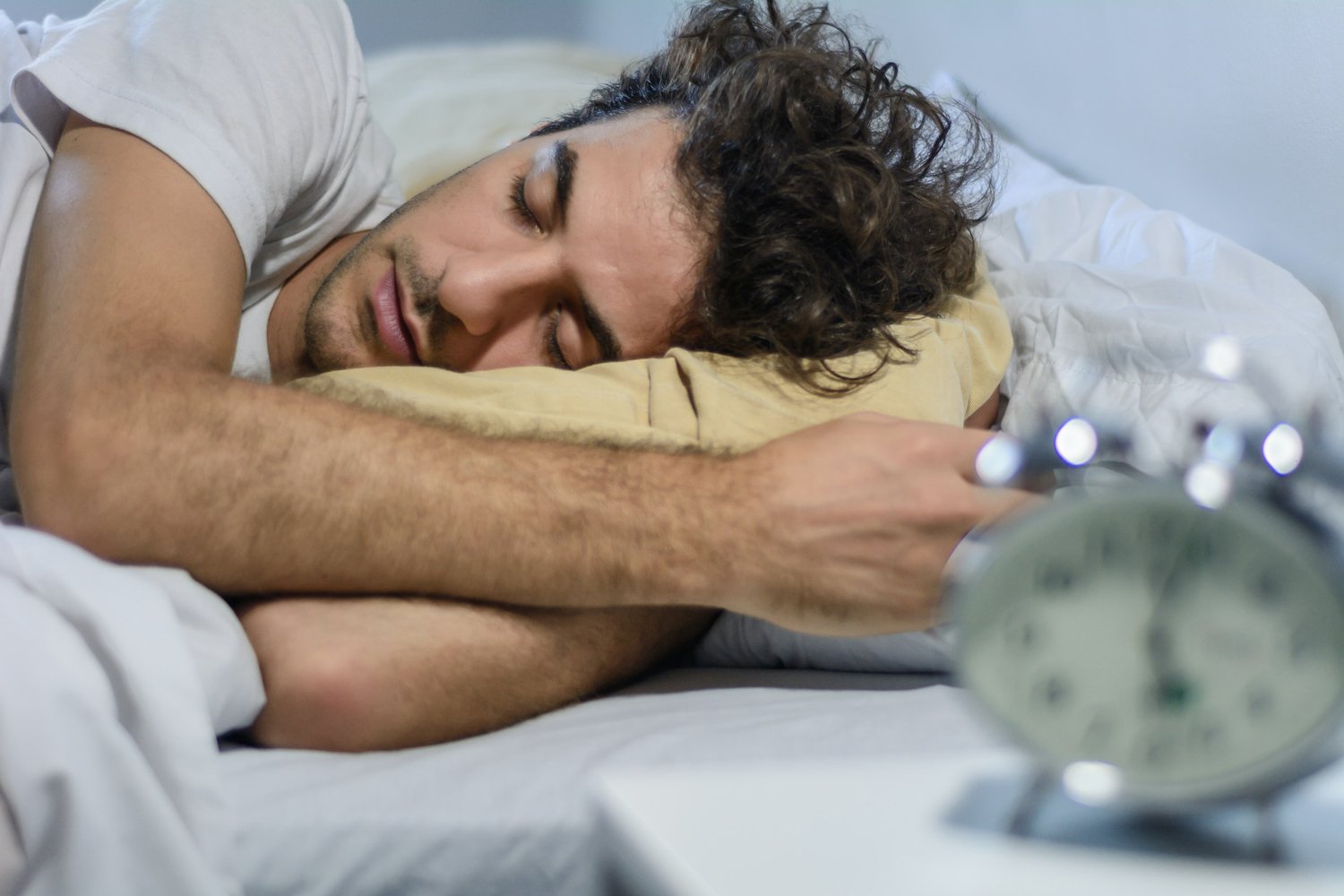
The Colors of Noise provide benefits across all the body's systems--but what does that mean exactly? For centuries, humans have employed sound to communicate. With our voices and other instruments, we use audible signals to convey comfort… warn of danger… express joy, angst… surprise.
Today, we’ll look closer at the Colors of Noise and how these sounds communicate with our brains to help us find focus, relax, get quality sleep, cope better… and hopefully heal.
Colored Sound healing techniques are becoming more mainstream as they prove their effectiveness in helping us manage our lives better. These colored noises are being used therapeutically to address a range of health issues across physical, mental, and behavioral conditions. We’ll look at a few of the most common applications, but first…
How "Color" influences us

Blue is associated with calmness. Exposure to this color is able to lower heart rate and metabolism.
What's your favorite color?
If you said blue, you’re in the majority. Blue is favored by more than 35% of the world's population. Why are we drawn to a particular color, yet repelled by some others? It’s because of the way colors make us feel.
The colors red and green come in second place in overall popularity, with orange, brown and purple placing third. In last place is yellow which is preferred by only 5% and sadly, hated by many. Orange stands out as it seems to be controversial and becomes less attractive to both men and women as we age. Of course, this begged the question, why all the fuss about orange…?
Orange you glad I asked?
Since orange is associated with High-Energy, Motivation, and Drive, I first thought we might simply begin to find it tiring as we grow older. But the color orange is also known to increase the supply of oxygen to the brain which energizes us and stimulates brain activity. Perhaps we need more—not less—of it to keep us going…
No luck solving the orange mystery, but more changes in age-related color preferences popped up. It seems our reaction to color just changes over time. For example, blue also becomes steadily less appealing as we age, while red and green gain favor.
Why do we ask about someone's favorite color?
Could be we just want to select the right present, but asking someone’s color preference is also a way to try and learn more about that person. “Color Psychology” is often used to assess one’s personality and predict how they will respond in everyday dealings. This may seem invasive, but you yourself use this tool when you select the best color outfit to wear to a job interview. Is it Right/Wrong? Go for it!
When you wear your power suit to influence a hiring decision, you are employing color psychology to market yourself. Marketers carefully select corporate colors for use in their products and logos which will project the right feel to the customer—we’re young & hip, we’re trustworthy, we’re girly, we’re eco-friendly. It’s called color marketing, and it’s powerful. Go ahead and use it to your advantage.
When it comes to evaluating people and their color preferences though, there are too many human variables to be taking this color psychology thing too seriously.
How Color Therapy differs from Color Sound Therapy
Color therapy (also known as chromo therapy--and not to be confused with colored noise therapy,) is a holistic practice in which the energy vibrations of different colors are employed to promote healing. By exposing the patient to colored bulbs of light, a chromo therapist is able to stimulate or relax them on a cellular level to effectively treat a range of physical, mental, and emotional conditions.
When you paint your bedroom a relaxing color to promote better sleep… or wear red to make you feel more confident… you’re utilizing a form of color therapy.
In one study, people who wore red rated themselves higher in attractiveness and sexual appeal than those who wore blue.

Color: a robust communicator
The website colorpsychology.org tells us color is an “unbeatable” communication tool; able to evoke emotion, change the way you think, alter your blood pressure—even make you feel hungry. Let’s see what these colors have to say… which attributes are subconsciously associated with them. And how they affect us on a cellular level…
Blue:
This color is commonly linked to Authenticity, Calmness, Compassion, Flexibility, Idealism, Imagination, Sincerity and Spirituality. Exposure to the color blue is able to lower heart rates and metabolisms and is used to treat pain.
Black:
Its diverse attributes include Authority, Depression, Elegance, Evil, Fear, Grief, Mystery, Power, Sophistication and Strength. Because it absorbs all color, black is a low-energy color—and on its own, can dampen moods and cause depression.
Brown:
This color’s lighter shades represent Dependability, Honesty, Resilience and Stability, but its darker hues are interpreted as Dull and Predictable. Because of its solid characteristics, the color brown evokes feelings of comfort and security.
Gray:
Considered an unemotional color, gray denotes Balance, Composure, Neutrality and Wisdom. Because it does not stimulate, energize or excite, gray provides a solid and stable respite from the chaos around us.
Green:
Health, Freshness, Gentleness, Growth, Invigoration, Purity, Relaxation and Vitality are all associated with the color green. It inspires us to feel more connected to ourselves as well as to nature. This allows us to achieve feelings of inner peace—which supports us in body, mind and spirit.
Orange:
The energy of this color is Communication, Enthusiasm, Happiness, Positivity, Rejuvenation, Stimulation and Success. Orange lessens inhibitions to allow one more freedom of self-expression. It is also used to heal the lungs and increase energy levels.
Pink:
Calmness, Femininity, Hope, Innocence, Kindness, Naivete, Optimism, Romance, Tenderness, and Tradition are represented in the color pink. The brighter hues stimulate heart rate, blood pressure and energy levels, while the softer tones instill a sense of comfort and calm.
Purple:
Associated with Bravery, Creativity, Imagination, and Nobility, this color is considered polarizing as people tend to either love it or totally hate it. The ambivalence continues in the cellular effects as we see it sometimes promotes feelings of calmness and introspection—and at other times, it provokes sadness and even frustration.
Red: From Anger, Danger, and Determination, to Love, Passion, Power, Strength, and War, the color Red runs the energy gamut—and attracts more attention than any other color. Red enhances our metabolism, raises our blood pressure, stimulates the mind, and increases appetites.
White:
Representing Cleanliness, Efficiency, Innocence, Faith, Goodness, Light, Order, Perfection and Purity, the color white evokes feelings of Trust. White helps us focus our minds, find clarity, and set clear boundarieswhich helps us de-clutter our lives and find peace.
Yellow:
Alertness, Cheerfulness, Creativity, Insightfulness, Intellect, Joy, Honor, Loyalty and Warmth are linked to the color yellow. It is also connected to increased left-side brainactivity and generates muscle energy and purifies the body. While all this sounds great, overuse of this color has negative emotional effects… and babies cry more in yellow nurseries.
Color therapy practices date back to ancient China, Egypt, Greece and India. Today, they’re used as complementary—or alternative medical treatment. Now, let's move on to the color noises and benefits...
The Colors of Noise
As with the colors of light, each of the colors in the noise frequency spectrum is distinctly different and lends its unique properties to specific functions. In the case of sleep, it is often used to tune out background noise like dripping faucets, the air conditioner clicking on... your noisy neighbor. With Pink Noise in particular, it is also used to promote deep sleep.
For blocking out noise, people commonly first turn to a sound machine—which typically plays either White Noise—or nature sounds like wind or ocean waves. This muffles the sound at best and requires the machine to be between the person trying to sleep and the offending sound. Likewise, noise cancelling doesn't completely block the sound either.
Good noise masking, however, completely eliminates the disturbing sound by replacing it with a more pleasant sound—like Pink Noise.
Noise Color Associations
Color associations for the sonic hues are assigned based on that particular sound’s similarity to a corresponding color in the light spectrum.
Color Sound Therapy most commonly uses the colors of noise to treat anxiety, pain, and stress but it has also shown progress with depression, insomnia, and migraines. And, more recently, these sonic hues have gained awareness for their benefits in treating auditory and behavioral conditions. Here’s a brief overview of the different sound hues and how they affect us…
White Noise
To understand the colors of noise, we’ll start with the one most people are somewhat familiar with: white noise. Just as the color white is made up of all the colors in the rainbow, white noise contains all frequencies of audible sound in equal measure. It is a high-pitched noise, commonly compared to the sound of static; or sometimes it’s referred to as a hissing sound.
White noise is most often used to lessen the effects of ambient noise via the use of a fan or white noise machine. This is also helpful when someone can’t sleep because it is too quiet. It has been useful in quieting crying babies, improving concentration, and may help control symptoms of ADHD. Some people find it useful for falling asleep, but others find the pitch too harsh and disruptive.
Some folks are also able to get migraine relief from white noise—that said, the results seem to vary greatly between users so it’s not a sure fix.

Studies show the soothing tones of Pink Noise relax the brain—which promotes deeper, more rejuvenating sleep.
Pink Noise
While pink noise also contains all octaves and frequencies in the sound spectrum, its frequencies are considerably lower. This produces a lower sounding pitch which is smoother and more pleasant to the ear than white noise, making it perfect for use as a sleep sound. Think waterfall—rustling leaves, or the sound of the seashore…
Studies have shown pink noise relaxes the brain which helps you fall asleep faster, achieve deeper sleep, and stay asleep longer. It is also proven to enhance cognitive function and improve focus.
Brown Noise
Though the structure of brown noise, (aka red noise,) is similar to that of white and pink noise, it too decreases in frequency and the frequency-level-decrease is double that of pink noise. This produces more lower tones and a sound that is sometimes compared to that of rainfall.
Research into the effects of brown noise on sleep is limited but it has been shown to improve cognitive function and focus and may also reduce tinnitus symptoms.
Gray Noise
Gray noise is similar to pink noise in that it sounds the same at every frequency. It has equal strength over every frequency which is pleasant to the human ear. Gray noise is used to treat hyperacusis (intense sensitivity to everyday sounds,) and tinnitus (ringing in the ears.) It is also useful in hearing studies, helping researchers assess how a particular person's hearing differs from the average.
Green Noise
Green is another (very) low frequency noise with “nature sound” qualities, like waterfalls and rivers. Therapeutically, it is mainly used for sound masking and relaxation.
Noises that emulate the soothing sounds we hear in nature bring a sense of peace—so we can let go and de-stress.

Blue, Violet, and Orange Noise have their own individual properties as well and all are harsh on the ears. Being tonally discordant, they’re not the most pleasant sounds to use but they still provide certain therapeutic benefits. The high frequency of Blue Noise is actually the exact opposite of pink noise.
Both Blue and Violet Noise may be helpful in treating Tinnitus. Orange Noise is useful in relieving symptoms of depression.
Lastly, we have Black Noise with a spectral density of zero at each frequency—which results in what’s popularly called “the sound of silence…” something we can all use now and then.
The Most Healing Noise
Most popular among doctors, scientists and therapists using the colors of noise, is the pink noise spectrum. It is used worldwide in the treatment of anxiety, cognitive issues and insomnia. It is also used to improve focus during the day and, as mentioned earlier, it helps achieve deeper, more restorative sleep.
It’s no secret sleep deprivation has reached record numbers and we’re constantly faced with the physical, mental and emotional health issues caused by this devastating sleep loss. Expect to see color noise benefits employed more widely as a sleep treatment therapy.
Utilizing the different noise spectrums for health benefits is a growing field, showing much promise—and gaining in popularity. The applications of this drug-free remedy for enhanced sleep are a welcome relief. And the best part? It’s easy to use and readily available.
The easiest way to use Pink Noise?
Pop in a pair of SoundOff sleep earbuds when you need to get a good night’s sleep… or need to ease your anxiety—or need to find focus in your noisy world!
Until next time…




